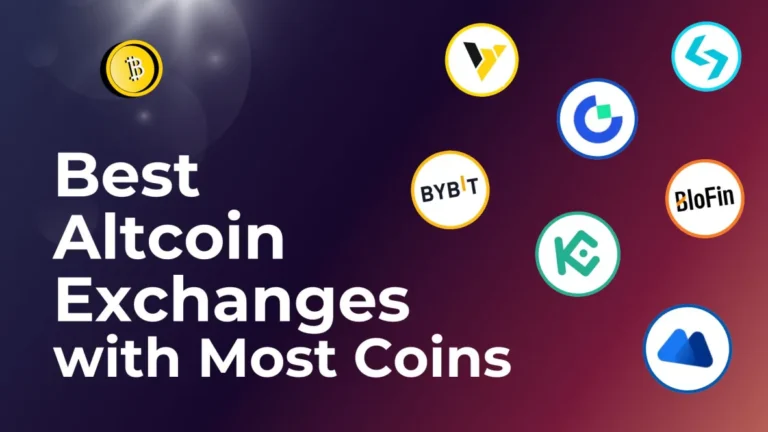In this article, we will present you with the top 5 crypto exchanges sorted by highest leverage to lowest. If you are a crypto day trader or scalper, using high leverage is crucial to get your desired position size. Additionally, leverage traders are seeking low fees. We have done the research to find the best high-leverage crypto trading platforms for your trading activities.
Why High Leverage Matters in Crypto Trading
Leverage trading involves borrowing funds to amplify position size, enabling traders to control larger positions with less capital. Traders commonly use high leverage for hedging existing positions, maximizing short-term trading opportunities, and freeing up capital for other investments or trades across multiple exchanges.
The primary advantage lies in capital efficiency—a trader with $1,000 can control a $100,000 position with 100x leverage. This allows experienced traders to maintain smaller account balances on exchanges while still accessing significant market exposure. Competition among crypto exchanges has pushed leverage limits progressively higher, with some platforms now offering up to 500x leverage.
However, higher leverage increases liquidation risk. A small adverse price movement can eliminate the entire position, requiring active risk management and precise entry/exit timing.
Top 5 Highest Leverage Crypto Exchanges
Below you can find a quick overview of the best cryptocurrency exchanges with high leverage and low fees. As you can see, the highest leverage is currently available at BTCC, with an astonishing leverage of 500x on BTC.
Rankings are based primarily on maximum available leverage for futures trading. Secondary factors include futures trading fees, number of supported futures contracts, KYC requirements, and additional platform features like copy trading, mobile applications, and demo accounts.
1. BTCC
2. MEXC
3. Blofin
4. Tapbit
5. Bitunix
What is Leverage?
Leverage in crypto trading means borrowing money to make bigger trades than you could with just your own funds. For example, if you have $1,000 and use 10x leverage, you can open a position with $10,000 worth of cryptocurrency.
While this can multiply your potential profits, it also multiplies your risks. If you’re trading Bitcoin with 10x leverage and the price moves just 10% against you, you’ll lose your entire initial investment. This is called liquidation – when the exchange automatically closes your position to prevent further losses.
The higher the leverage, the smaller the price movement needed to either make significant profits or get liquidated. Crypto exchanges typically offer leverage from 2x up to 100x or even higher, though trading with very high leverage is extremely risky, given how volatile cryptocurrency prices can be.
Below you see the theoretical price movement to get liquidated based on the selected leverage. However, note that these are only theoretical. Usually, you get liquidated earlier as the crypto exchange also takes things such as slippage, fees, spread, and liquidation fees into consideration.
| Leverage | % Move To Get Liquidated |
|---|---|
| 2x | -50% |
| 5x | -20% |
| 10x | 10% |
| 25x | 4% |
| 50x | 2% |
| 100x | 1% |
| 200x | 0.5% |
| 500x | 0.2% |
What to consider when choosing a Leverage Trading Platform
Trading fees matter a lot with leverage since you’ll be opening and closing larger positions. Compare the futures fee structures across different platforms, including funding rates, which are charged every 8 hours and are relevant for traders holding positions for a long period of time. In crypto futures trading, you should look for exchanges offering fees of 0.02% maker and 0.06% taker or lower. Additionally, compare the VIP fee structure. Most crypto exchanges offer generous fee discounts based on a trader’s 30-day trading volume.
Liquidity is crucial – larger exchanges typically have better liquidity, which means less slippage when entering and exiting trades. This becomes especially important with leveraged positions as they can become quite large.
Consider the maximum allowed leverage and which trading pairs are available. Some platforms only offer up to 100x leverage, while others cap it at 500x. Also, check if they offer the specific cryptocurrencies you want to trade.
Check if the platform is available in your jurisdiction and whether they require KYC verification. Some platforms may not be legally accessible in certain countries. If you want to remain anonymous while leverage trading cryptocurrencies, consider checking no KYC exchanges.
Interface and reliability matter too – you want stable servers that won’t crash during high volatility and a clean interface that helps prevent costly mistakes.
Lastly, you should never neglect security. Look at the platform’s track record with security, whether they’ve been hacked before, and what security features they offer like 2FA and withdrawal whitelisting.
Can I lose more than I invest when Leverage Trading Crypto?
When leverage trading cryptocurrencies on futures exchanges, you can’t lose more money than what you have. However, there are some key differences you must consider.
First of all, you must differentiate between cross and isolated margin mode. Then, there is a special case when it comes to unified margin accounts.
Isolated Liquidations: In isolated margin mode, you can only be liquidated for what you put into the trade. If you open a 10x leverage trade with $1000 margin in isolated mode, this position will be liquidated when the price moves 10% against you. In this case, you can only lose the $1000 you used for this specific trade, even if you have another $5000 sitting in your derivatives wallet.
Cross Liquidations: In cross-margin mode, you can lose everything in your whole derivatives wallet, not only what you used for the trade. If you open a 10x leverage trade with a $1000 margin in cross mode and another $5000 in your wallet, this position can go lower than 10% as it also takes the additional $5000 into consideration. This trade would only be liquidated when the price moves 60% against you, as this would use up all of your additional balance in your derivatives wallet. Spot wallets are usually not considered for cross-margin mode (except when using a unified account; more about that in the next section).
While cross margin mode can potentially lose you more than isolated margin mode, cross mode has some key pros to consider. Cross margin mode is very powerful for traders looking to hedge their positions, meaning they offset losses of one trade with wins of another trade.
Unified account liquidations: Some crypto exchanges offer so-called “unified margin accounts”. These unified trading accounts consider everything that you have in all of your exchange wallets as margin (including spot, derivatives, options, and any other available wallet). Additionally, these exchanges automatically set the margin mode to cross-margin, meaning that you can lose everything in your whole crypto exchange account and not only what you have invested in your trade or in your derivatives wallet.
| Margin Type | What You Can Lose |
| Isolated Margin | Only what you put into the trade |
| Cross Margin | Everything you have in your futures wallet |
| Unified Margin | Your whole crypto exchange balance across all wallets |
Best High Leverage Trading Strategy
The best strategy for high leverage traders is scalping. Crypto scalpers get in and out of trades within minutes, sometimes even seconds. These high leverage scalpers profit from minimal price movements and often take dozens or even hundreds of trades per day.
While scalping sounds like a great thing, as you can take tons of trades on a daily basis, you should always consider the risks involved when it comes to trading cryptocurrencies. Scalping is arguably the hardest type of trading style to master, and most won’t succeed. In fact, statistics show that up to 90% of day traders are not profitable.








